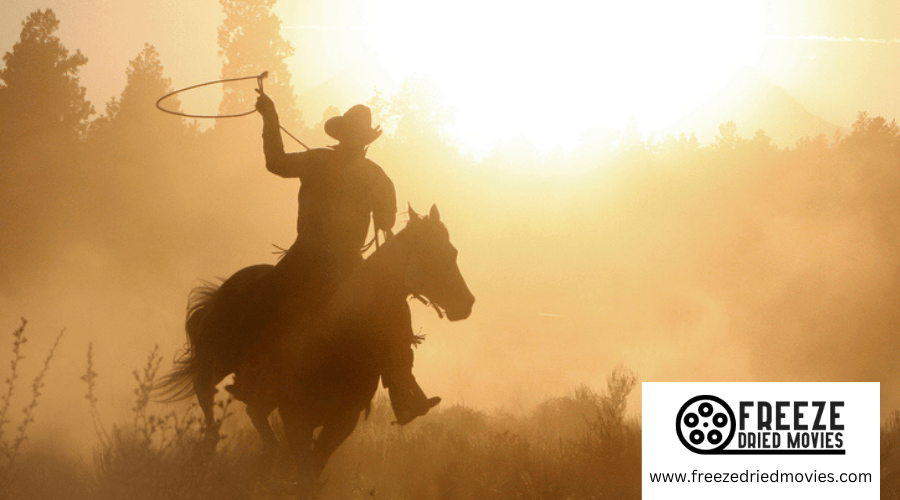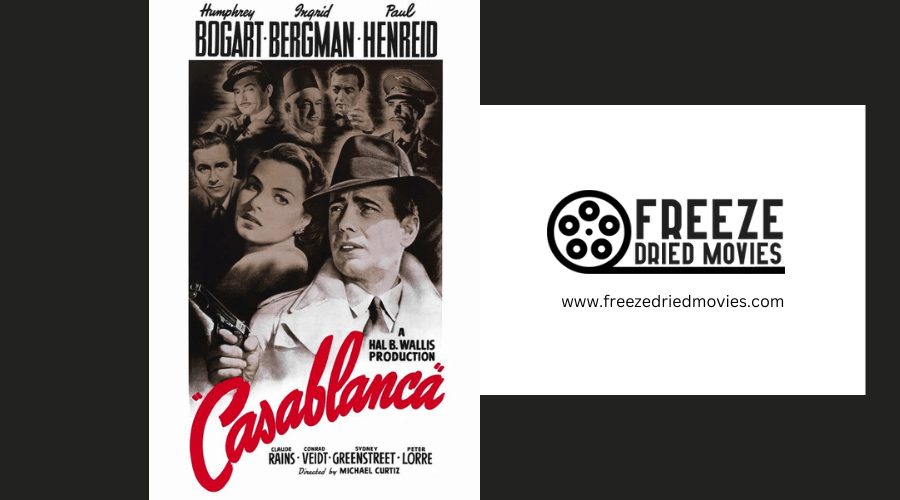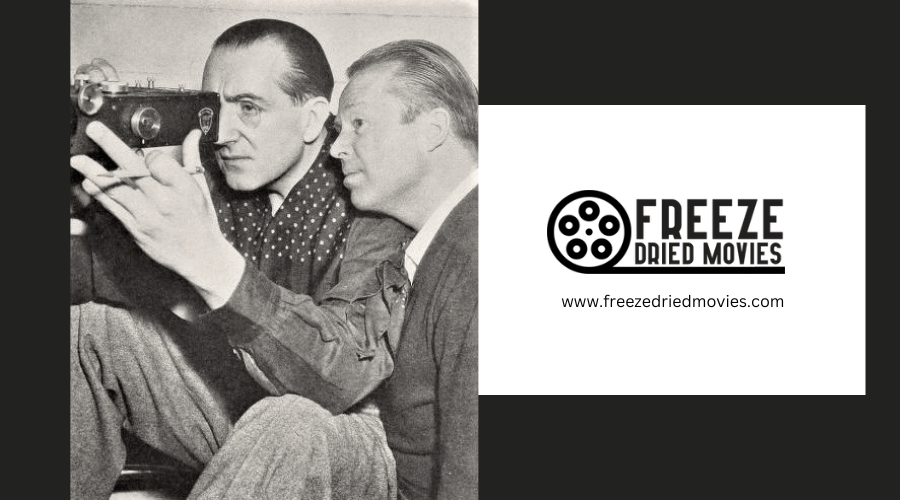What Were the Common Themes in 1940s Western Films?

In 1940s Western films, prevalent themes include law enforcement and frontier justice, with sheriffs upholding moral values against the backdrop of a wild and untamed wilderness. These films typically contrast the civilization with rugged, wild environments, emphasizing the settlers' challenges and the consequences for indigenous cultures.
Central figures such as stoic cowboys or courageous sheriffs confront personal and ethical dilemmas, encapsulating themes of bravery and justice. The narratives are driven by loyalty, betrayal, and moral conflicts that deeply explore the characters' ethical convictions.
Themes of survival, honor, and the timeless struggle between good and evil are recurrent, steering characters through complex moral choices. These elements collectively enrich the thematic depth of these iconic films, reflecting the era's cultural and social dynamics.
Law and Frontier Justice
In 1940s Western films, the themes of law and frontier justice were central, significantly shaping the genre's narrative. The films typically portrayed sheriffs and marshals as embodiments of honor and morality, crucial in maintaining order in the unruly frontier. These characters did more than just wear badges—they represented upholding values in environments where ethical standards were often questionable.
The plots frequently highlighted the stark contrast between civilization and barbarism, with justice playing a pivotal role. Frontier justice was depicted not just as simple vengeance but as a complex interplay of revenge and its consequences. Each movie posed moral questions: Should the lawman allow the townspeople to take revenge in their own hands, or should he intervene to ensure a lawful, albeit possibly unsatisfactory, resolution?
The landscape itself was portrayed as more than just a setting—it was an active participant that tested the characters' moral limits. Through narratives involving gunfights and hangings, the films explored the delicate balance between justice and retribution, prompting viewers to reflect on the real cost of peace in such a tumultuous setting. These elements ensured the films weren't only engaging but also a profound commentary on the dynamics of law, order, and ethics on the American frontier.
Civilization Vs. Wilderness
In the 1940s, Western films depicted interactions between settlers and Native Americans, often reflecting the broader theme of civilization confronting wilderness. These films portrayed settlers as agents of law, order, and modernization, advancing into areas traditionally occupied by Native Americans, whose lifestyles were depicted as closely intertwined with nature and tradition.
The narratives typically presented a clear dichotomy: the structured, rule-governed societies emerging within the frontier towns versus the unpredictable and unstructured life beyond their perimeters. As a character in these films, a settler would be shown facing the challenges of cultivating a civilized area amidst the wilderness, which involved not only physical survival but also navigating the ethical complexities posed by impacting traditional ways of life.
Additionally, these films explored the effects of modernization on indigenous cultures. Settlers, often portrayed with newer technologies and forward-thinking ideologies, were contrasted with the Native Americans, who were represented as custodians of tradition and ecological harmony. The films aimed to portray the inevitable transformations and often harsh realities brought about by this cultural and territorial intersection, highlighting the profound and sometimes devastating outcomes of expansion.
Heroic Archetypes

Heroic archetypes in 1940s Western films, such as the stoic cowboy and valiant sheriff, are emblematic of bravery and justice. These characters, including the fearless gunslinger and the rugged outlaw, display courage and resilience, essential in shaping the era's cinematic narrative. They not only confront villains but also grapple with personal dilemmas and make sacrifices that highlight their deep-seated sense of duty and loyalty to ethical principles and community well-being.
Additionally, the lone drifter on a quest for redemption and the reluctant hero facing unexpected challenges enrich these narratives. Their stories aren't just about external conflicts but also about internal struggles and ethical decisions.
The archetype of the righteous lawman, who consistently embodies morality and justice, emphasizes the period's focus on the victory of good over evil. These characters, from the stoic cowboy to the valiant sheriff, symbolize an idealized version of American values, celebrating the triumph of moral integrity and the enduring spirit of the frontier through acts of valor.
Loyalty and Betrayal
In 1940s Western films, characters such as the stoic cowboy often embody ideals of bravery. The recurring themes of loyalty and betrayal unveil the intricate moral landscapes they traverse. These films typically portray characters caught in a tug-of-war between their loyalties to friends, family, or community and their own personal convictions, underscoring the films' central motifs. The evident internal struggles and ethical quandaries faced by these characters not only enhance their development but also enrich the narrative's complexity.
Betrayal serves as a pivotal narrative tool, intensifying the suspense and conflict. This element goes beyond mere duplicity; it profoundly affects the dynamics of relationships and individual fates in the harsh frontier setting. The fallout from acts of betrayal is often contrasted with the virtue of adhering to one's principles, thus providing a deep exploration of human nature.
Key considerations include:
- Loyalty, which is fundamental to the narrative's relational dynamics, guides characters' choices and behaviors.
- Betrayal acts as a catalyst for significant plot developments, altering relationships and the storyline's direction.
- Internal conflicts emerge as characters balance competing loyalties, leading to crucial decisions that determine their trajectories.
- Moral dilemmas compel characters to weigh their loyalty against personal beliefs, ultimately influencing their developmental arc.
These elements ensure the films not only entertain but also offer a window into the complexities of human interactions and moral judgments.
Struggle for Survival
Survival against harsh conditions is a central theme in 1940s Western films, depicting characters contending with nature, bandits, and rival factions. These films highlight the perseverance and resilience required to overcome adversity. Scenes richly detail the challenges of scarce resources and hostile environments, underlining the survival struggle.
Envision being in landscapes that test your survival instincts. These films immerse viewers in situations where the human spirit is tested to its limits. The focus isn't solely on physical hardships but also on the internal battle to maintain resolve against disheartening odds.
The characters exemplify self-reliance as they navigate through adversities with courage and determination, embodying the spirit of the Old West. Their unyielding drive to persevere despite dire circumstances offers a profound look at the human condition engaged in a relentless quest for survival. This portrayal isn't merely a narrative element but a true reflection of human resilience and determination.
Moral Dilemmas
In 1940s Western films, characters frequently encountered complex moral dilemmas that tested their ethics and values in the untamed frontier. These scenarios involved a sheriff torn between enforcing the law and maintaining loyalty to a friend who'd become an outlaw. Set against the stark and rugged frontier, these narratives delved into more than just action scenes; they probed into the ethical decisions required in an environment where legal boundaries were often ambiguous.
These moral quandaries not only added depth to the films but also challenged viewers to ponder their own responses in similar situations. Would you prioritize justice or personal gain? Is it possible to seek redemption in a place overwhelmed by moral decay? The dilemmas presented were multifaceted:
- Struggle between right and wrong: Characters wrestled with choosing between their ethical beliefs and the seductive lure of frontier lawlessness.
- Ethical choices: The decisions made were critical, impacting not only the outcomes for the characters but also shaping the moral landscape of the frontier societies.
- Seeking redemption: Many protagonists sought to amend previous misdeeds, navigating their paths through intricate and morally grey scenarios.
- Justice vs. honor: The pursuit of justice was often at odds with personal honor codes, forcing characters to confront difficult decisions.
These elements of tension and moral complexity did more than entertain; they engaged viewers in deep reflections on human nature and the ramifications of choices in a world where ethical lines were frequently indistinct.
Honor and Sacrifice
Honor and sacrifice are central themes in 1940s Western films, where characters are often faced with challenging decisions. These films depict individuals who navigate complex moral landscapes driven by values such as integrity, duty, and loyalty. The protagonists not only confront outlaws but are also wrestling with internal conflicts, striving to act ethically despite potential risks.
Characters in these films typically exhibit selflessness, prioritizing the well-being of others, which showcases the era's emphasis on courage and altruism. Honor in these narratives is not merely a concept but a practical ethos, compelling characters to defend their communities and principles at significant personal cost.
The moral intricacies portrayed in these stories do more than entertain; they engage viewers by mirroring universal aspects of human behavior and societal norms. Here is a brief overview:
| Theme | Impact on Characters |
|---|---|
| Sacrifice | Motivates characters to endanger themselves for the common good. |
| Honor | Inspires adherence to ethical choices in dangerous situations. |
| Loyalty | Connects characters to their communities and personal values. |
Good Versus Evil

The theme of good versus evil is central to many 1940s Western films, sharply delineating heroes from villains. These narratives often feature morally upright protagonists, typically in law enforcement roles, who strive for justice and righteousness. Conversely, the antagonists are depicted as embodiments of moral corruption and chaos, challenging the societal order.
This theme offers several key benefits to audiences:
- Moral Clarity: The films provide a straightforward distinction between right and wrong, making complex moral decisions more accessible.
- Role Models: Protagonists exemplify virtues like courage and integrity, serving as models for commendable behavior.
- Catharsis: The heroes' defeat of the villains not only concludes the narrative satisfyingly but also celebrates the victory of good over evil.
- Social Reinforcement: These films consistently promote the importance of following the law and upholding societal norms by demonstrating the triumph of good over villainy.
Thus, these films do more than entertain; they reinforce and reaffirm essential moral values, demonstrating the prevailing power of righteousness.
Conclusion
1940s Western films predominantly explore the conflict between civilization and the untamed wilderness, illustrating key themes such as law enforcement, justice, and the fundamental battle between good and evil. These films often portray heroes and villains who embody loyalty and betrayal while grappling with moral dilemmas.
Beyond mere survival, these narratives emphasize the values of honor and sacrifice. These recurring themes not only entertain but also mirror the societal values and challenges prevalent during the 1940s.




